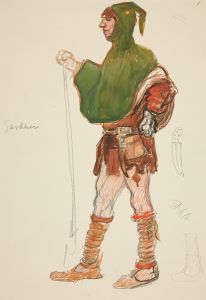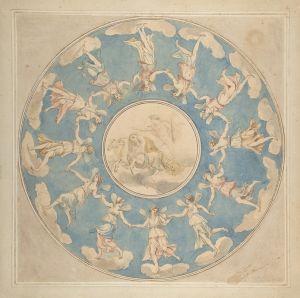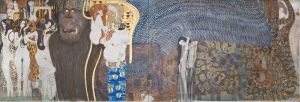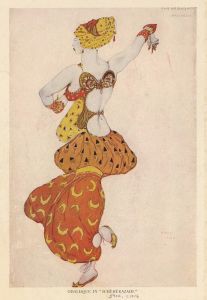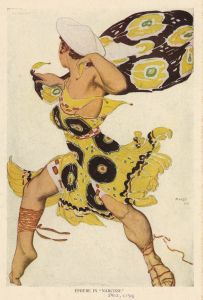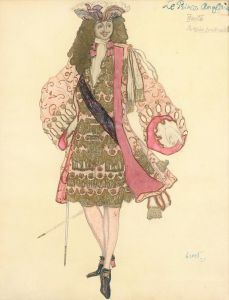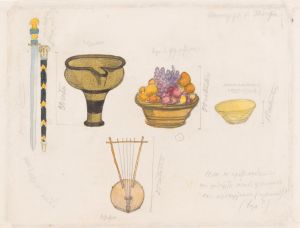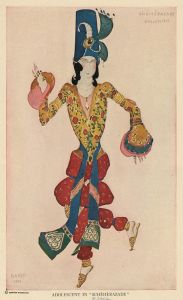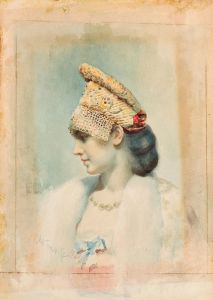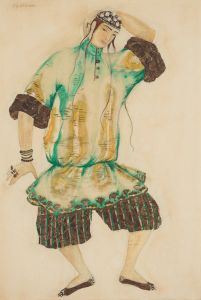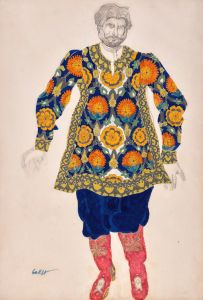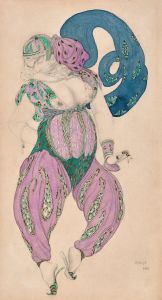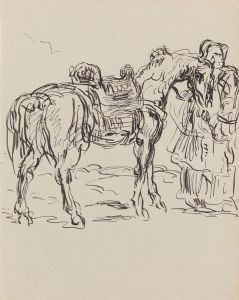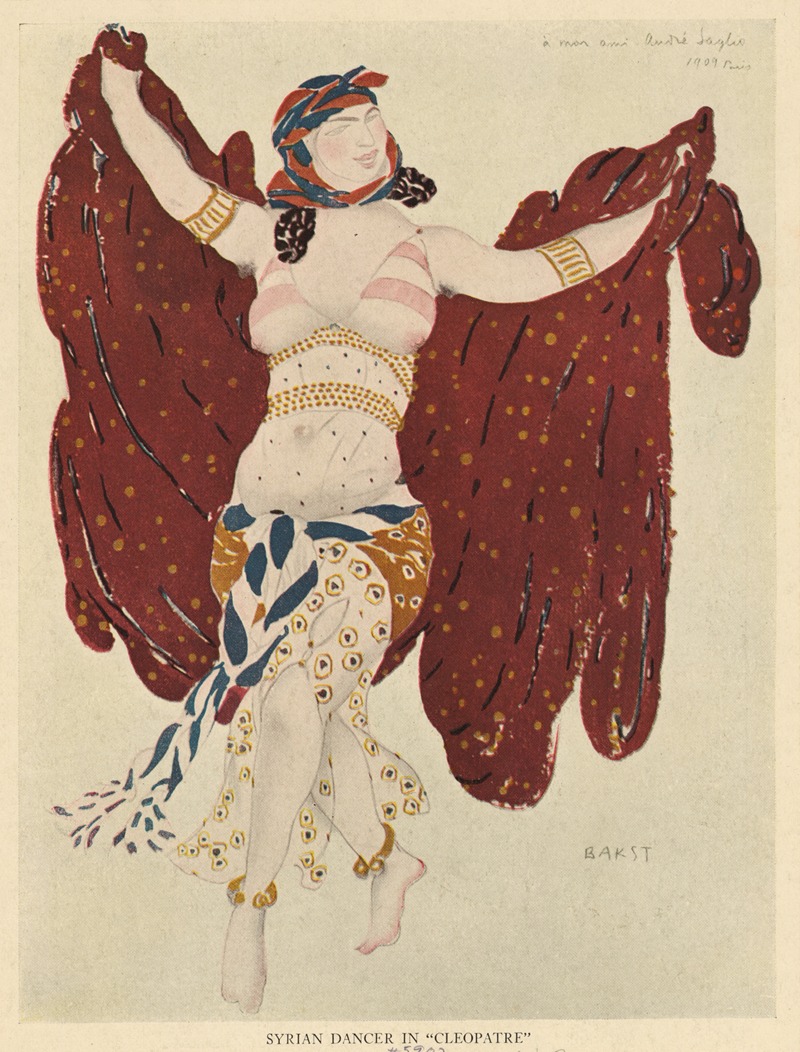
Syrian dancer in ‘Cleopatre’
A hand-painted replica of Léon Bakst’s masterpiece Syrian dancer in ‘Cleopatre’, meticulously crafted by professional artists to capture the true essence of the original. Each piece is created with museum-quality canvas and rare mineral pigments, carefully painted by experienced artists with delicate brushstrokes and rich, layered colors to perfectly recreate the texture of the original artwork. Unlike machine-printed reproductions, this hand-painted version brings the painting to life, infused with the artist’s emotions and skill in every stroke. Whether for personal collection or home decoration, it instantly elevates the artistic atmosphere of any space.
The artwork "Syrian Dancer in ‘Cleopatre’" is a notable piece by Léon Bakst, a prominent Russian painter and scene and costume designer. Bakst is best known for his work with the Ballets Russes, a famous itinerant ballet company based in Paris that performed between 1909 and 1929. The company was founded by Sergei Diaghilev and became renowned for its groundbreaking artistic collaborations among choreographers, composers, and artists.
Léon Bakst, born Lev Samoilovich Rosenberg in 1866, was a key figure in the world of theatrical design during the early 20th century. His work is characterized by vibrant colors, exotic themes, and intricate patterns, which were revolutionary at the time and contributed significantly to the visual identity of the Ballets Russes. Bakst's designs were instrumental in the success of many productions, and his influence extended beyond the stage to fashion and interior design.
The painting "Syrian Dancer in ‘Cleopatre’" is associated with the ballet "Cléopâtre," which premiered in 1909. This ballet was one of the early productions of the Ballets Russes and was originally titled "Une Nuit d'Égypte" (A Night in Egypt). The production was a reimagining of an earlier work by Mikhail Fokine, who also choreographed the Ballets Russes version. The story of "Cléopâtre" revolves around the legendary Egyptian queen and her dramatic and romantic escapades.
Bakst's design for "Cléopâtre" was instrumental in creating the exotic and opulent atmosphere that characterized the production. His work on this ballet exemplified his ability to blend historical and fantastical elements, creating a visual feast that captivated audiences. The "Syrian Dancer" is one of the many characters in the ballet, and Bakst's depiction of this figure showcases his skill in capturing movement and emotion through costume and color.
The costumes designed by Bakst for "Cléopâtre" were noted for their luxurious fabrics, bold colors, and intricate detailing. These elements not only enhanced the visual spectacle of the performance but also contributed to the narrative by reflecting the characters' personalities and the setting's exoticism. Bakst's work on "Cléopâtre" and other productions helped to elevate the role of the costume designer in theatrical productions, highlighting the importance of visual storytelling in ballet.
Bakst's influence extended beyond the Ballets Russes, impacting the broader art and fashion worlds. His designs were celebrated for their innovation and creativity, inspiring fashion designers and artists alike. The "Syrian Dancer in ‘Cleopatre’" remains a testament to Bakst's artistic vision and his contribution to the world of theater and design.
In summary, Léon Bakst's "Syrian Dancer in ‘Cleopatre’" is a reflection of his pioneering work with the Ballets Russes, showcasing his ability to create visually stunning and thematically rich designs that continue to be celebrated for their artistic and historical significance.





